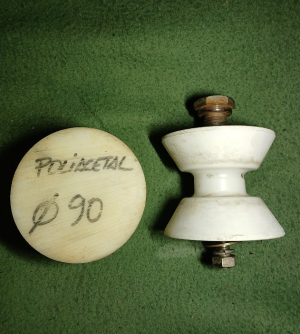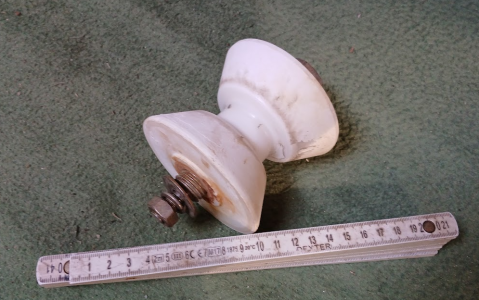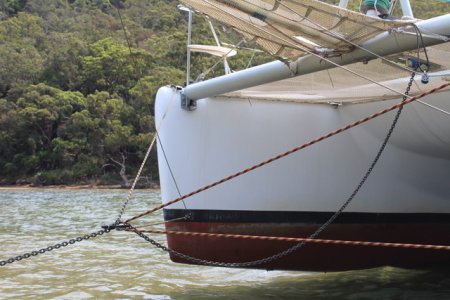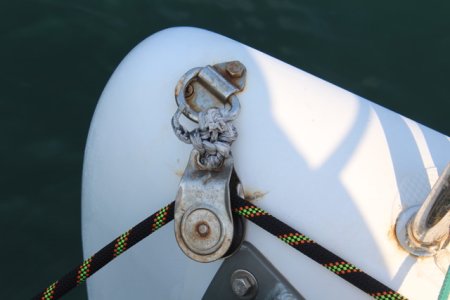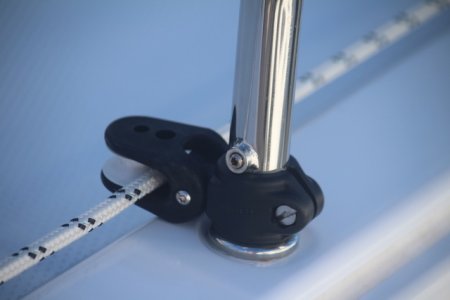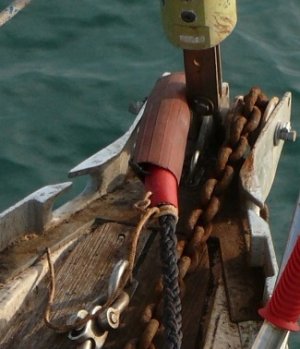GHA
Well-Known Member
I did know about nylon swelling but forgot it was so much.Both my bow rollers were turned from acetal. Not sure how long ago, ten years? No obvious wear. Acetal is a widely used self lubricating polymer that is just about ideal for the job. Nylon swells considerably in water, up to 11% for some grades.
The mists clear a little....
It's coming back to me now, I bought some acetal off a cruiser in Brasil ages ago & had a local fabrication shop sort out a better bolt & turn down the roller. Then it didn't get touched til the on deck snubber was fitted about a year ago.
So it is acetal. Another option - the axel is a M20 bolt fully threaded which is starting to wear the roller, 1" stainless seamless tube should fit over that pretty tight then get the hole in the roller reamed out so it's a slightly sloppy fit on the stainless. Also means I can crank up the bolt onto the cheek plates & tube, at the moment even though they're 6mm plate, crank the nut too much will bend themin a bit & jam the roller. Off to Faro tomorrow where there's a very big stainless stockist, he'll likely have some, maybe even in metric if such a thing exists.
The whole point of this was to get hold of any materials needed with the rare luxury of an address soon
And the spare acetol can be turned into sheaves to fit on deck for the snubber diversions at some point . It's slowly coming together, with very little involvement of the wallet
thnx all.
